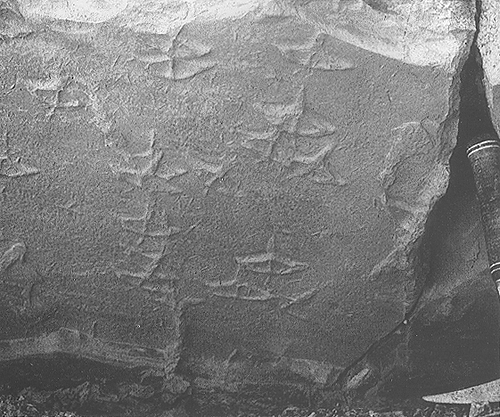
Birdfoot casts
Plate 148

Birdfoot casts
Plate 148
The base of a sandstone bed preserves the molds of tracks left by the feet of palmiped birds roaming the smooth muddy bottom of a coastal pond or a tidal flat. Some shallow elongated ridges hint at molds of mud cracks. The structures are obvious indicators of emergence. They occur on Cenozoic deposits of the Pyrenees, consisting of interbedded sandstones and mudstones that look like many "classical" turbiditic formations. And so in the late fifties they were interpreted as turbidites by the first zealots of the new paradigm of turbidity currents: flute and groove casts on the bed soles (not shown in our example) were carefully observed, but the birdfoot casts escaped attention. This caused a great controversy among sedimentologists, because opponents to the new idea of turbidity currents, mostly represented by some French academics, took advantage of this major turbidite mistake to slander turbidite fans. In fact, because of these famous pattes d'oiseaux (and some culture problems), the turbidite concept did not became fully accepted in France until ten or fifteen years later than elsewhere.